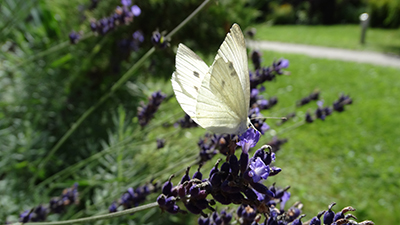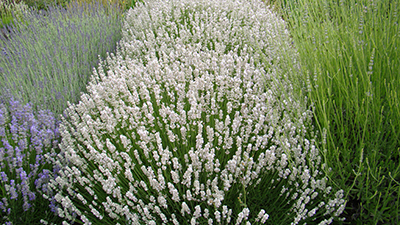Lavandula angustifolia Mill. (Labiatae)



| ENG | Lavender |
| SK | |
| CZ | |
| PL | Lawenda lekarska |
| HU |
Using
Lavender has long been used as an analgesic, antidiabetic, antiseptic, antidepressant, antispasmodic, carminative, cicatrizant, and sedative. Fresh leaves and flowers are applied to the forehead to relieve headaches and to joints to treat rheumatic pain. The vapors of steamed flowers are used as a cold remedy. Lavender can be used to flavour white wine and vinegar. Valuable product is lavender honey, used in pulmonary diseases treament. Lavender oil and extracts are indespensible as components of fragrances and cosmetics.
| I. | II. | III. | IV. | V. | VI. | VII. | VIII. | IX. | X. | XI. | XII. | |||||||||||||
| Sowing | ||||||||||||||||||||||||
| Planting | ||||||||||||||||||||||||
| Harvest (floweers, herb) | ||||||||||||||||||||||||
Botanical description and occurrence:
Lavender is native to the Mediterranean region but it is cultivated worldwide. In temperate climate, lavender needs a good cover for the winter because is not entirely hard to frost. Plant is evergreen sub-shrub that grows to approximately 1 m high. Root system is strong, highly branched and fibrous. The base of stem is woody, while the upper steams are green. The lanceolate leaves are fuzzy and gray when young and turn green as they mature. They are covered with tomentum, which protects them from strong sunshine, wind, and water loss. Lavender has small violet flowers, arranged in circles forming a spikes in the top of the stem.
Why to have the plant in your garden:
If you have a place in your garden with full sun exposure – grow lavender and simultaneously invite many useful polinators which love lavender flowers. You can compose ornamental arrangation with white, pink to dark violet cultivars with flowers of many shades. The athmosphere of French Provance or Italian Toscany, sun and holyday, and potpourri as a memory of summer...
Text:
Dr. Agnieszka Sekara, University of Agriculture in Krakow, Poland
Photo:
Dr. Agnieszka Sekara, University of Agriculture in Krakow, Poland

